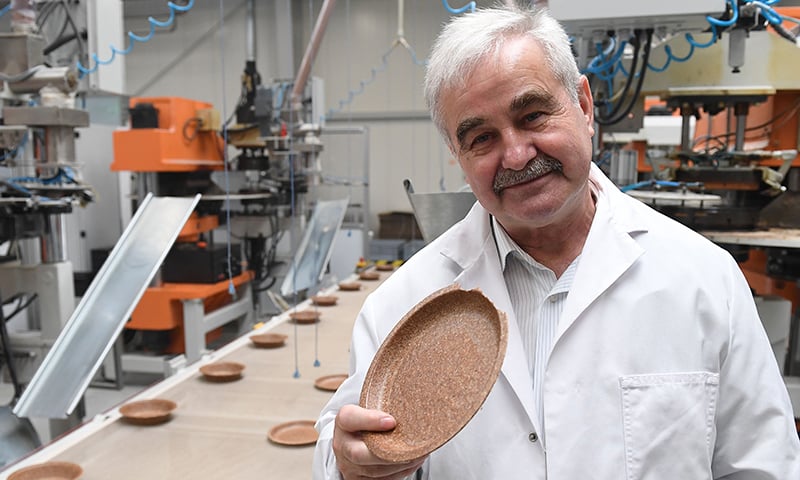Zambrow (Poland): Polish inventor and entrepreneur Jerzy Wysocki catches a brown plate – still warm – as it drops out of a machine and he begins to eat the crunchy, fibrous tableware.
“A pork chop will always be more delicious on this wheat bran plate than on plastic,” says Wysocki with a big grin at the Biotrem factory in Zambrow in northeast Poland.
Taking a bite, the plate does not have much of a flavour. It calls to mind dry cereal flakes or maybe what you would imagine cardboard to taste like.
But Wysocki says what matters is that the tableware is biodegradable.
The sexagenarian invented the plate some 15 years ago, and today Biotrem makes around 15 million of them a year.
That figure could soon skyrocket thanks to a decision by the European Union to ban plastic plates and cutlery starting in 2021.
A son and grandson of millers, Wysocki got the idea for the tableware when he was looking to use up the leftovers of flour production, which take up a lot of space.
But he says he is also driven by the desire to help a good cause, “because the amount of rubbish that pollutes oceans is huge and frightening.”
“To make the plates, we only use wheat bran, which we compress at a precise pressure point and temperature, using a machine made specifically for that purpose,” he explains.
Biotrem CEO Malgorzata Then acknowledges, of course, that at 15 euro cents (17 US cents) a pop or 20 percent more for exports, wheat bran plates are more expensive than their plastic counterparts.
But “the current price of plastic doesn’t factor in the environmental cost, that of recycling and marine pollution,” she adds.
At first, the company targeted clients who were environmentally inclined as well as restaurants and hotels that wanted to offer something original.
Biotrem distributes the plates in Europe, Asia, North America and Australia. The client Down Under had asked that they check whether earthworms would like the taste – they do.

